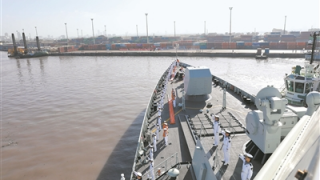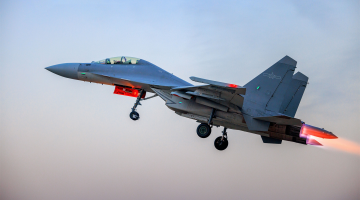By Zhang Xiaoli and Dong Xiaochao
To improve its independent defense capabilities and reduce its security dependence on the US, the EU has accelerated the integration of national defense technologies and industrial bases, and vigorously promoted the construction of common defense in recent years. However, the latest progress of the EU countries is accused of lacking a strategic vision and is drifting away from the above-mentioned strategic goals. As a result, the common defense construction is faced with new variables.
Recently, the relevant decisions of the European Commission (EC) on important defense projects have been questioned. Among them, the European Hypersonic Defense Interceptor (EU HYDEF) and the Next European Fighter Engine (NEFE) projects have become the focus of criticism from the outside world.
The EC awarded the EU HYDEF project to Spain's Sener Aerospacial Sociedad Anonima and Germany's Diehl Defense in September 2022, instead of the missile manufacturer MBDA as expected. The HYDEF project is related to the Timely Warning and Interception with Space-based Theatre surveillance (TWISTER) project. The main contractor of the TWISTER is the MBDA, an advanced missile weapon system manufacturer jointly formed by the UK, France, Germany, and Italy. MBDA is a relatively successful case of the integration of the European defense industry. In contrast, Spain's Sener Aerospacial Sociedad Anonima is less famous. Some foreign media even believe that the EC's choice of Sener is a wrong decision, which may weaken the EU's common defense foundation.
Another EC’s recent decision is also considered to be unfavorable to the construction of the EU's common defense. The commission selected Avio Aero, an Italian subsidiary of General Electric of the US, as the main contractor for the NEFE project, a subproject of the Future Combat Air System (FCAS). The main contractors of the FCAS are Safran Aircraft Engines of France and MTU Aero Engines of Germany. Among them, Safran Aircraft Engines is regarded as a giant in the field of aircraft engine research and development. Currently, the company is trying to triple the production capacity of the Snecma M88 engine. Avio Aero is a US-based defense company and the prime contractor for the UK's sixth-generation stealth fighter Tempest. The decision made by the EC means that European taxpayers' money is being used to fund a competitor to the EU's next-generation fighter jet.
The European Sky Shield Initiative led by Germany is gradually developing into an obstacle to the EU's common defense construction. At first, EU countries spent huge sums of money to promote the project, in order to enhance the missile interception capability of Europe through joint research and development or integration of air defense missile systems of various countries. At present, the initiative has 17 member countries, and they tend to jointly purchase air defense missile systems such as the Patriot system of the US, the Arrow-3 of Israel and the IRIS-T of Germany, and it is far behind the expectations of European countries. Critics believe that the initiative has neglected the SAMP/T air defense system developed by France and Italy. And this will even endanger the TWISTER project and have an impact on the future security and sovereignty of European countries. Scholars at the German Institute for International and Security Affairs pointed out that the European anti-aircraft missile system has equal or better performance, but it is not popular because of lobbying or political preferences. Moreover, the purchase of anti-aircraft missile systems outside Europe will inevitably reduce investment in the construction of the EU's independent air defense capabilities.
The defense manufacturers in Europe have also shown no signs of unity. For example, in March 2022, the European aircraft manufacturer Airbus selected Avio Aero to provide engine and propeller solutions for the Eurodrone project, leaving France's Safran Aircraft Engines and others in the cold. More than 10 percent of the engine’s components are manufactured in the US and are not restricted by the US International Traffic in Arms Regulations, and this may have an impact on the European defense industry.











